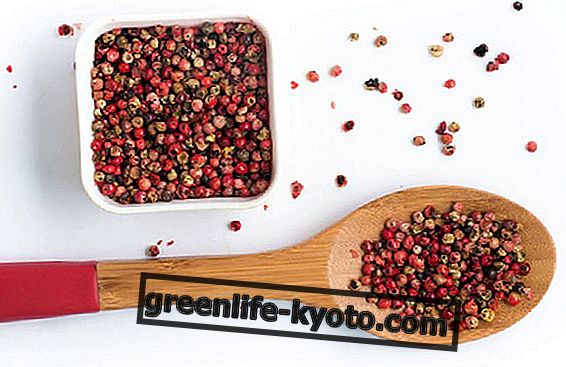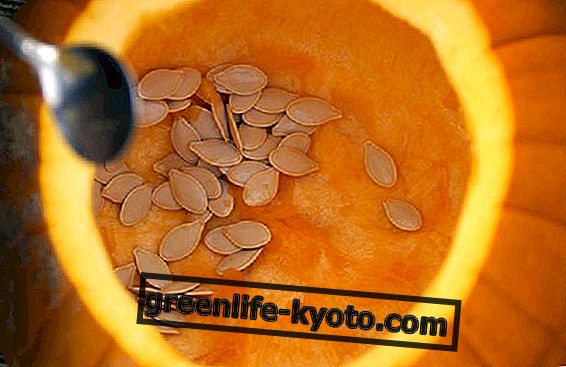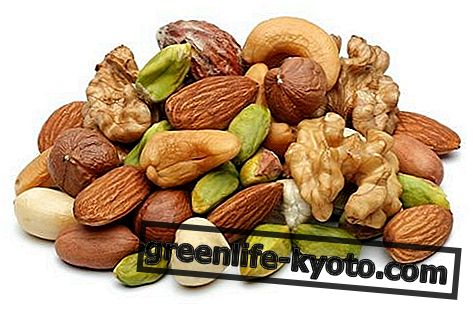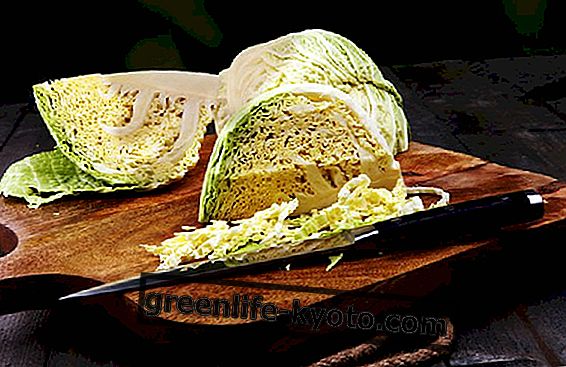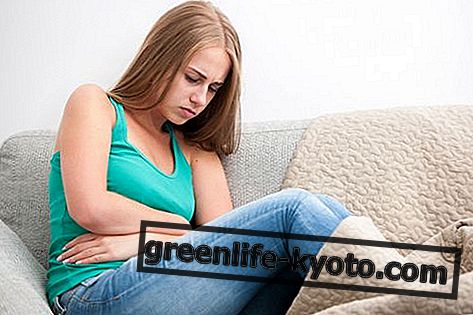Menstrual pains are uterine cramps that can affect women during menstruation.
Menstruation is the way in which the body expels the uterine wall (endometrium) that has been prepared to accommodate a possible fertilized egg. The contractions used to flake and expel this wall may be more or less strong.
All phases of the menstrual cycle
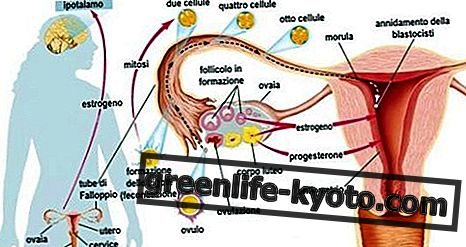
Psychic factors certainly influence the intensity and duration of symptoms, but the main cause of the pain is due to the fact that the endometrium, especially in the menstrual period, produces considerable amounts of prostaglandins, which, in high concentrations, generate significant uterine contractions that can cause pain in the lower abdomen.
Obviously they are nothing compared to contractions of childbirth, but the hormones involved are the same.
Symptoms of menstrual pain
Every woman experiences pain at different stages of the cycle and with different intensities and often these are accompanied by increased or decreased appetite, fatigue, difficulty concentrating, headache, breast tenderness, constipation or diarrhea, weight gain, need for swallow sweets.
Causes
Menstrual pain ( dysmenorrhea ) may depend on several factors, related not only to physical, but also emotional and mental aspects. Stress and anxiety provoke and / or accentuate menstrual pain, but we point out that the pain threshold varies greatly from woman to woman . The situation with abnormal, excessive menstrual pains, which can be linked to various diseases, is different. Among these pathological conditions that can give rise to important pains we find:
- Inflammation of the lining of the uterus (endometriosis)
- Inflammation transmitted sexually
- Uterine neoplasms such as uterine fibroids and ovarian cysts
- Infection of the uterus
- Pelvic inflammatory disease.
We further specify that these are pathological conditions, different from the physiological pain that accompanies the menstrual cycle.
CARE FOR MESTRUAL PAIN
Supply
Menstrual pains have various causes that can be prevented with an integrated approach and a healthy diet . In the 14 days preceding the cycle it is necessary:
- Reduce if you do not avoid milk and dairy products, refined cereals and white sugar, veal and chicken that contain hormones
- Enhance nutrition with foods containing magnesium : peas, green vegetables, almonds, peanuts and cocoa
During menstruation it is good to support the liver with carbohydrates, proteins and vegetables. Meals should have a relaxing action in order to reduce painful symptoms, for example:
- Lunch: grilled fillet + raw Belgian endive + bread + apple
- Dinner: rice and zucchini + bitter vegetable + fruit
Prefer foods with a relaxing action especially at dinner: green beans, courgettes, boiled potatoes, pasta or rice seasoned with pesto.
Beware of foods that interact with coagulation: citrus fruits, cheeses, carrots, peppers, pumpkin, fish and pineapple.
Also important is the intestinal bacterial flora that must be reintegrated with species-specific probiotics and nourished with foods rich in fiber: in the case of dysbiosis and with a diet low in fibers in fact the hormones may not be completely eliminated and this worsens the painful symptoms.
Find out more about proper nutrition to treat menstrual pain

Herbal remedies for menstrual pain
The herbal remedies against dysmenorrhea, exploit plants with antispasmodic properties, that is, able to relax the smooth muscles of the uterus, favoring, in synergy with the other elements of their phytocomplexes, an improvement in painful symptoms. Other plants instead act as rebalancing of the female hormonal system, regulating the production of those hormones (prostaglandins PGF2), responsible for the contractions and uterine spasms.
- Achillea : ( Achillea millefolium ) particularly used in case of painful menstruation, it turns out to be an excellent antispasmodic remedy, and rebalancing of the hormonal system. The plant is also indicated for all those symptoms related to the premenstrual phase, associated with nervousness, irritability, mood swings, weakness and fatigue. During menstruation, on the other hand, its astringent, anti-inflammatory and haemostatic properties are used to decrease blood flow in the event of heavy menstruation.
- Chamomile: ( Matricaria recutita ) is one of the plants most traditionally known and used as a natural remedy for painful menstruation (as well as an anti-inflammatory), due to the spasmolytic action on the smooth muscles of the uterus.
- Calendula : ( Calendula officinalis ) for internal use, generally as mother tincture or macerated glycerine, is used in dysfunctions of the female genital apparatus, since it increases the scarce menstruation and decreases the abundant ones. It has antispasmodic action on menstrual and abdominal pains.
- Agnocasto : ( Vitex agnus castus ) the fruits have the ability to act on the pituitary gland and exert an anti-estrogenic and antispasmodic action, indicated to counteract dysmenorrhoea, and all those symptoms related to the premenstrual phase, associated with nervousness, irritability, fluctuations of mood, anxiety, depression and in the neurovegetative disorders of menopause.
- Sage : ( Salvia officinalis ) the leaves exert an emmenagogue action that is capable of regularizing the menstrual flow and attenuating any painful manifestations; its estrogenic type hormonal action is also useful to counter menopausal disorders.
Among the vegetable oils, much used are those obtained by mechanical pressing of the seeds of Evening Primrose ( Oenothera biennis ) and Borage ( Borago officinalis ) to relieve many purely female disorders, such as breast pain (mastalgia), typical of the premenstrual period, the cycle irregularities, menstrual pains, amenorrhea, and ovarian cysts . On the market they are found in pearls as a food supplement.
Finally, the raspberry bud-derived ( Rubus Idaeus ) is a hypothalamic-pituitary-gonadal regularizing agent, therefore it is used in the imbalances of the female hormonal system, including menstrual pains and irregularities, pre-menstrual syndrome, mastopathies, ovarian cysts and uterine fibroids.
Emmenagogue plants, an aid for disturbances of the menstrual cycle
Bach flowers for menstrual pain
Physical pathologies, such as menstrual pain, are not treated directly with Bach Flowers, as these remedies act primarily on the emotional state, which leads to the manifestation of a certain disorder.
In general the menstrual pains are caused by some hormones, responsible for the strong contractions of the uterine muscles. The emotional sphere and mood are closely linked to the hormonal system.
For this reason, personalized mixtures must be composed, with respect to the person's emotional state and experience, and chosen with respect to the individual's reaction to these situations and not just to the symptom.
However the use of Rescue Remedy in cream, if massaged on the abdomen, consists in a relaxing and balancing remedy, to relieve pain and muscle tension.
Traditional Chinese Medicine
In traditional Chinese medicine menstrual pains stem from acting on the functional disorders that affect them, therefore an obstructed flow of Xue and Qi, caused by psychological factors or external agents such as Cold and Humidity.
In the books of traditional Chinese medicine 4 different syndromes are represented:
Xu (Vacuum) syndrome of Xue and kidney energy deficiency;
SHI (Full) syndrome from Xue and Qi stasis;
HAN syndrome (from Freddo), which is divided into Han Shi and Han Xu;
Syndrome RE (from Fire).
For all syndromes, therapy consists of mobilizing the stasis of Xue and internal vital energy, removing Cold and Humidity to reactivate the Circulatory System and quell the pain.
Some important points are:
- PI SHU (point Shu of the back of the Spleen, at 1.5 cun to the side of the spinous apophysis of the XI thoracic vertebra), mobilizes the qi of the Spleen;
- ZU SAN LI (under the lower edge of the patella, to the side of the anterior tibial crest), tones Spleen and Stomach;
- XING JIAN
- QI HAI (located 1.5 cun below the navel), tones and regulates the Kidneys and stimulates the excess of Yang.
Aromatherapy in case of menstrual pain
To relieve menstrual pain, the use of essential oils is an aromatherapy therapy that intervenes both psychically and physically.
Some essences rebalance the female hormonal system, modulating the production of prostaglandins (PGF2), responsible for uterine contractions and spasms; others play an anti-inflammatory and relaxing action for the benefit of the smooth muscles of the uterus.
- Geranium essential oil massaged on the lower abdomen, relaxes uterine contractions due to ovulation and menstrual pain; helps relieve the discomforts of menopause and premenstrual syndrome, neuralgia and headache;
- Lavender essential oil : plays an antispasmodic action on muscle contractions, calms abdominal pains and spasms;
- Rose essential oil: calms spasms in case of menstrual pains and stops bleeding. Indicated in disorders related to hormonal imbalances, anxiety and irritability that characterize premenstrual syndrome and menopause;
- Chamomile essential oil : helps to relax tense muscles, due to nervousness, irritable bowel, spasms, colitis and gas colic, especially in newborns. Gives benefit in case of menstrual pain and menopausal disorders.
Homeopathy
In the case of patients with menstrual pain, the homeopath may prescribe Actaea racemosa 9 CH (5 granules, once a day from ovulation of the menstruation) or the cimifuga, a plant indicated for the treatment of painful menstruation when the spasms are proportional to the quantity and to the duration of the flow.
Another homeopathic remedy is Magnesia phosphorica 9 CH (5 granules, also every 15 minutes), or magnesium phosphate, effective against spasmodic and cramp-like pains.
Veratrum album 9 CH (5 granules, also every 15 minutes), or white hellebore, indicated in case of pain, prostration, weakness, cold body, nausea.
Exercises for menstrual pain
Against spasms and menstrual pain yoga is very effective, and above all cheaper, if you choose DIY. Among the most suitable yoga positions to find relief from menstrual pain we recommend: Marjariasana (position of the cat) and Gomukhasana (position of the cow's snout), two simple positions, also suitable for beginners.
To go to Marjariasana : put yourself "on all fours", placing your hands, knees and feet on the ground; the hands are shoulder-width apart, the arms stretched out, the shoulders are above the hands, aligned, so that the arms are perpendicular to the ground; the knees are at the width of the pelvis and the thighs are perpendicular to the ground, so that the pelvis is not too projected forward, nor too much lowered towards the feet. The feet can be extended or with the fingers pointed on the ground.
Gomukhasana instead provides for the maintenance of the sitting position, crossing legs and arms: the legs are bent and the right foot rests on the left leg and so vice versa while the arms, bent behind the back, one from above and one from below, are held for the hands forming an "S". More difficult to say than to do, one must inhale and exhale while maintaining the position for at least 5 breath cycles and then change by reversing the position of the legs and arms.
Do not give in to laziness and a sedentary lifestyle. Big mistakes for those who think of the menstrual cycle as a disabling phase. Obviously, every woman is different, and, also based on the experience of the women of her own family who preceded her, she may suffer severe pain or live the pre-menstrual and menstrual phase very serenely. What is true of all is that physical activity increases blood flow and provides oxygen to the body's tissues, helping the entire body to relax.
The sense of pain and heaviness can also be tackled with gentle exercise and with Pilates performed with due patience and care. Go ahead also to all relaxation techniques.
It is very useful to massage the abdominals when the pain is strong to reduce muscle tension. It seems trivial to recommend it, but our own hands are therapeutic; if used with targeted intention, the relief will be immediate. Another sensitive area is the heels, according to the foot reflexology . Perform an acupressure on the sides of the heel (where the ovarian area and all the reproductive system are concentrated) and slowly ascend the calf (this will also favor the lymphatic flow and the swelling will be attenuated).

